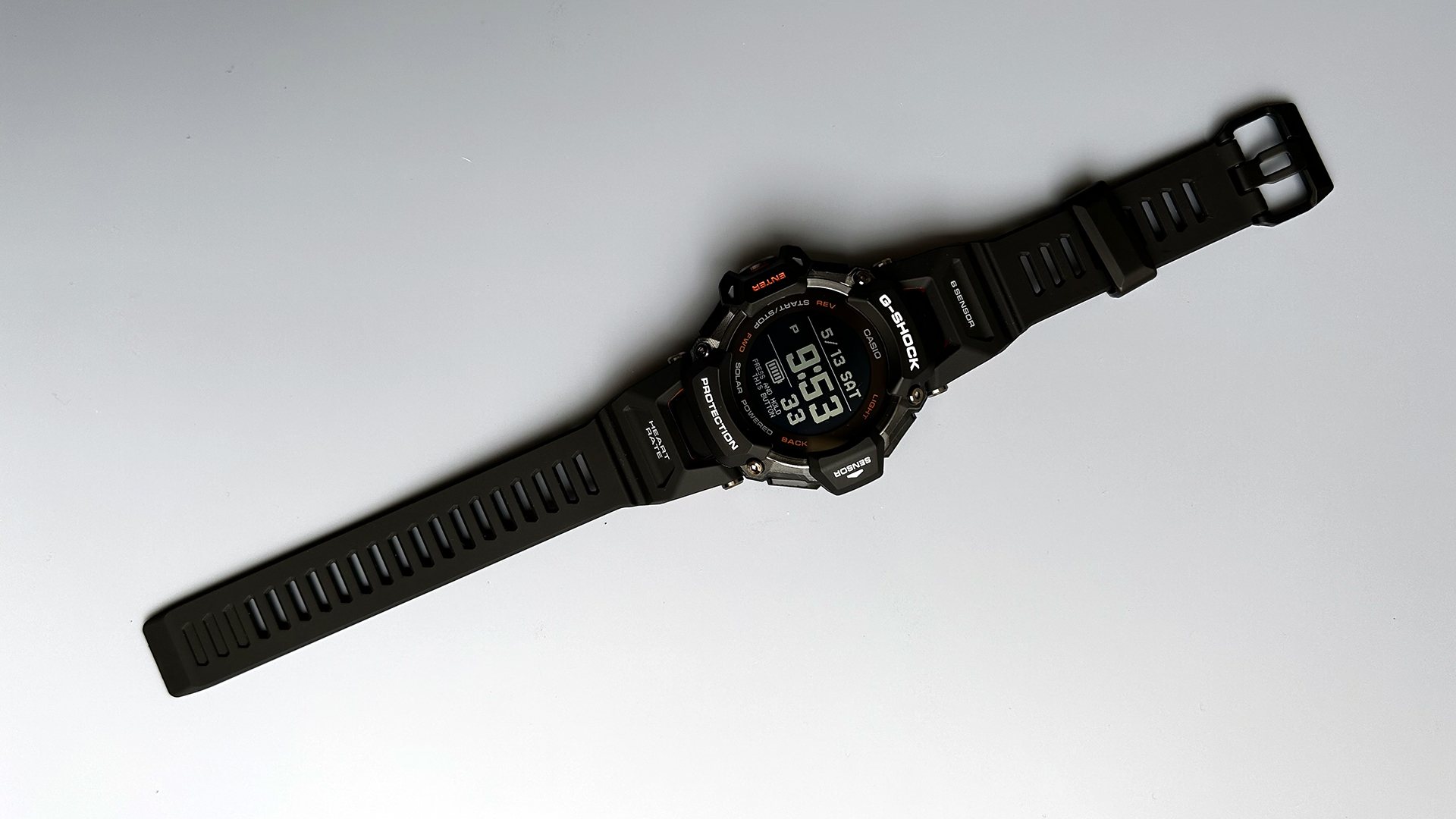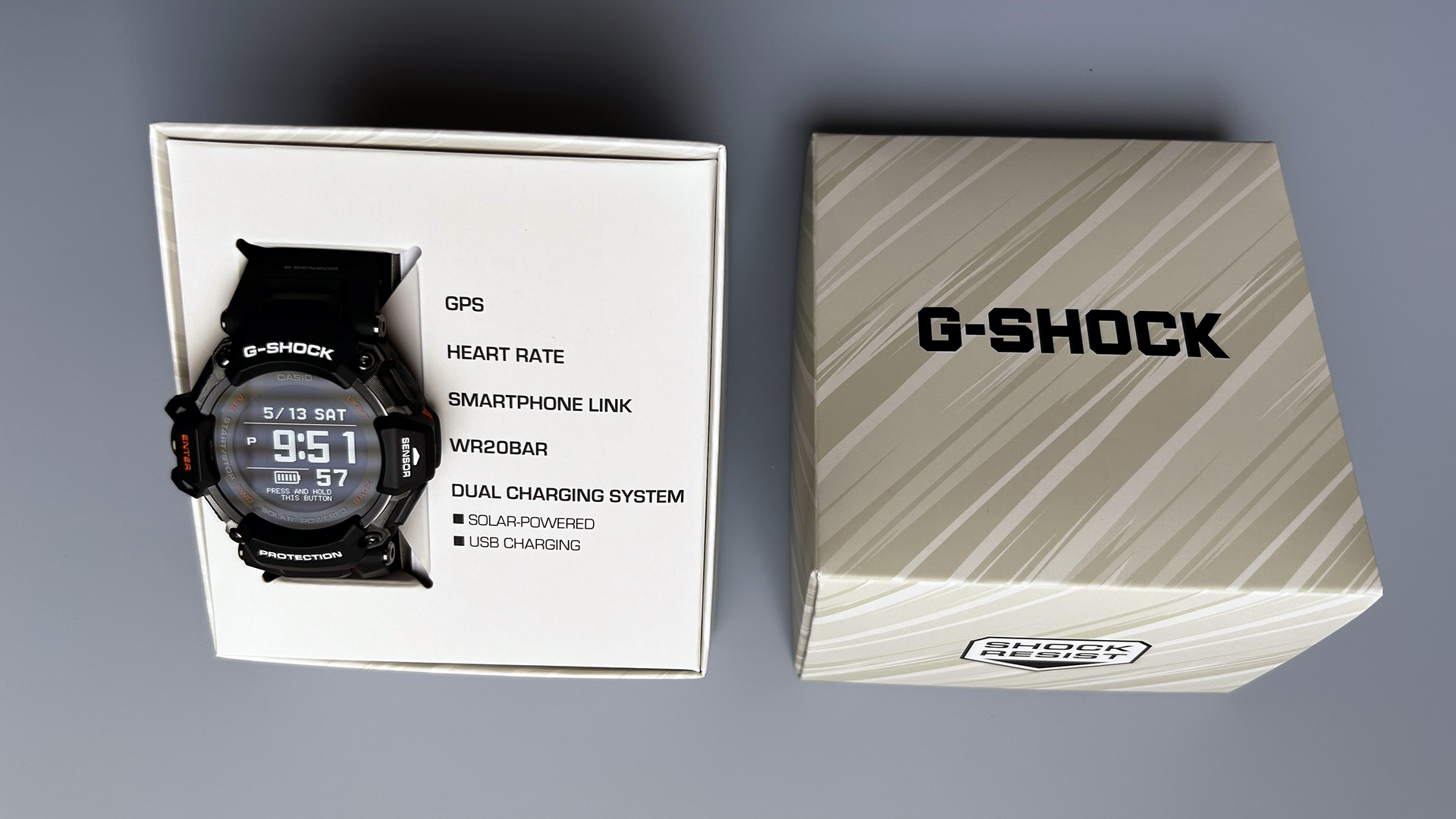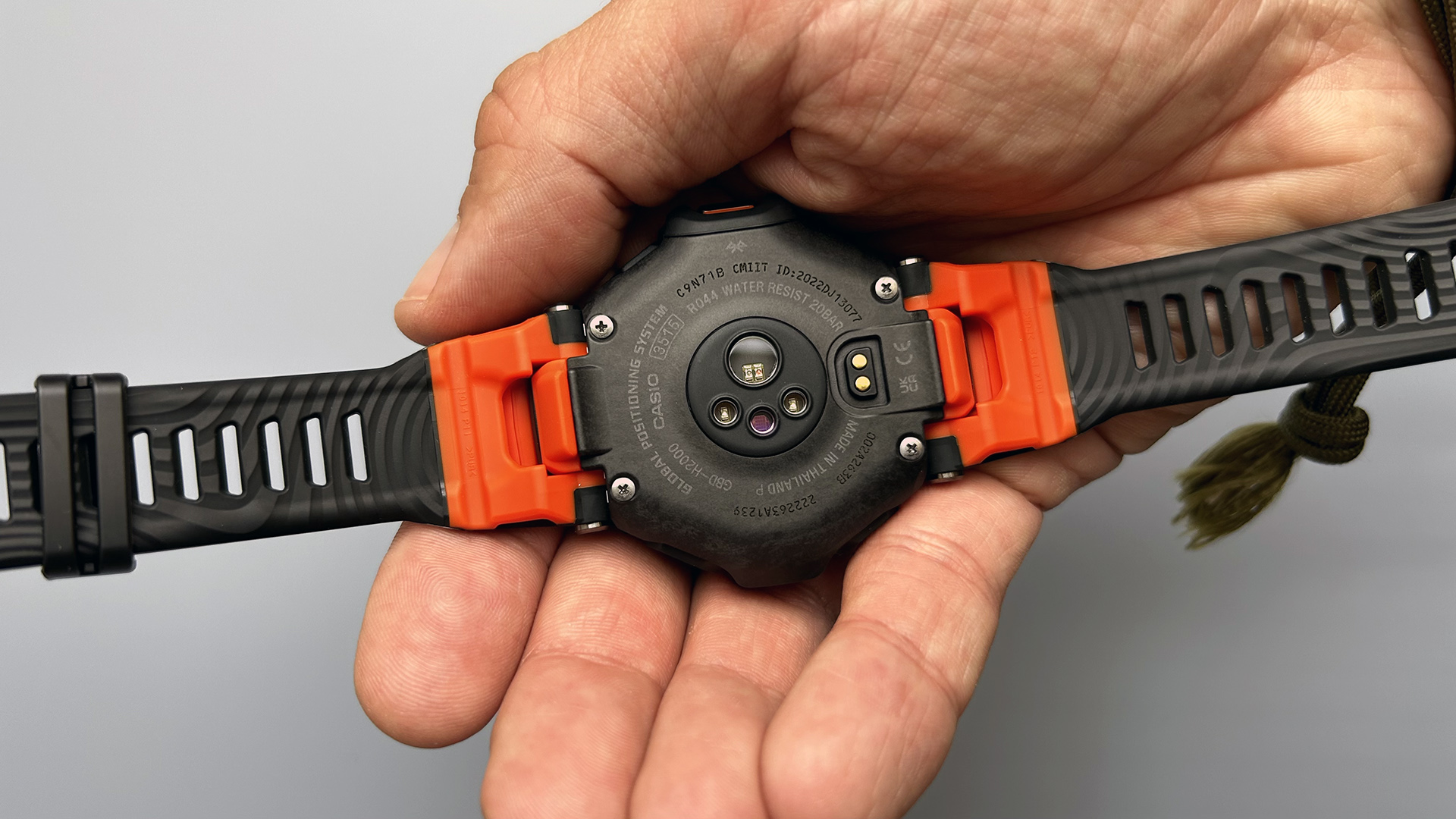Casio G-Shock GBD-H2000 review: the mostly-okay of both worlds
Is the Polar-powered G-Shock GBD-H2000 a start of a new era for Casio?


The Casio G-Shock GBD-H2000 isn't a rugged outdoor watch; it's more of a fitness tracker/running watch hybrid with a tough case. I hope Casio will stick with the Polar algorithm and start working on their user experience so that their watches might entice others than just Casio fans. I'll be here waiting.
-
+
Algorithm and health and fitness features provided by Polar
-
+
Cool, quirky design
-
+
Long battery life + solar charging
-
-
Clunky and sluggish user interface
-
-
Too bulky to wear the watch 24/7
-
-
Falls in between most wearable categories
Why you can trust T3

Casio G-Shock GBD-H2000 review in a nutshell:
You might not think someone who reviews the best smartwatches will often come across G-Shock watches. After all, G-Shocks are fashion accessories; you won't often hear runners or triathletes talk about the latest G-Shock release either. Interestingly, the GBD-H1000 is the third G-Shock I have reviewed in recent years.
I remember being intrigued by the Japanese brand's first venture into the weirdly wonderful world of fitness wearables in the form of the Casio G-Shock GBD-H1000. It used Casio's own operating system and was a fine first try – nothing to write home about, though.
Then came the Casio G-SQUAD PRO GSW-H1000, which ditched Casio's proprietary OS for Google's WearOS. Yet again, it was a fine smartwatch at best, showing enough potential to please G-Shock fans but falling short of providing an excellent smartwatch experience.
Enter the G-Shock GBD-H2000. Casio yet again switched things up a bit by teaming up with Polar, the Finnish performance watchmaker whose watches are often used by pros for training and recovery. In fact, the G-Shock GBD-H2000 is the first non-Polar smartwatch to use Polar's algorithm and features. Does it deliver? Let's find out!
Casio G-Shock GBD-H2000 review: price and availability
The Casio G-Shock GBD-H2000 was announced in February 2023 and is available to buy now directly from Casio UK and Casio US for a recommended retail price of £379/ $399 (approx. AU$ 700). It's currently available in four colourways.
To put it in perspective, you can buy a new Apple Watch Series 8 for the same price (around $400) and a Google Pixel Watch for less (approx. $350). I won't even try and compare the asking price to similarly-specced running watches, as those are much cheaper than the GBD-H2000. The same goes for fitness trackers.
Get all the latest news, reviews, deals and buying guides on gorgeous tech, home and active products from the T3 experts
Casio G-Shock GBD-H2000 review: specifications
- Dimensions: 59.6 x 52.6 x 19.4 mm
- Weight: 63 grams
- Display: Memory-in-Pixel LED
- Built-in GPS: multi-system GNSS (GPS, QZSS, Galileo, Beidou and GLONASS)
- Connectivity: Bluetooth (range up to two metres)
- Sensors: barometer, thermometer, altimeter, gyroscope and optical biosensor (heart rate and blood oxygen)
- Solar charging
- Watertight to 200 metres (WR20, water-resistant up to a depth of 200m/ 660ft)

Casio G-Shock GBD-H2000 review: design and build quality
The Casio G-Shock GBD-H2000 is a big watch. It's tall and thick with prominent, protruding rubber elements that make the watch look even bigger. Of course, this is all part of that classic G-Shock look we admire (well, I do). The chunkiness of the watch does serve a purpose, though: the GBD-H2000 is watertight to 200 metres.
A couple of details are worth noting. First, the watch uses a 'dual-layer' frame design, which helps keep the weight of the watch down (the Casio G-Shock GBD-H2000 weighs 62 grams with the straps). It's actually somewhat smaller and much lighter than the GBD-H1000 mentioned above, clocking in at 101 grams.
Secondly, part of this dual-layer design is the bio-based resin bezel and band made with the new eco-friendly material. Bio-based resin is said to use renewable and sustainable organic resources such as corn.
The watch has five textured side buttons. It also has a solar ring around the memory-in-pixel display. I found no information about the MIP display regarding resolution and size, but it's easy to read in broad daylight.

Casio G-Shock GBD-H2000 review: features
Thanks to the Polar integration, the Casio G-Shock GBD-H2000 is a considerably decent activity tracker. It hasn't got 100+ different workout modes like the best triathlon watches, but it covers the basics, such as running, cycling, and swimming. The watch also has a bunch of features focusing on training and recovery, which is to be expected from a Polar-powered wearable.
There are also smart features on offer, although the smartwatch prowess of the GBD-H2000 is a far cry from the Apple Watch Series 8 and the Google Pixel Watch. It can keep you up to date with notifications, though, and provide you with basic details of your steps taken, calories burned, cardio load status, etc., via the Life Log feature.
The Casio G-Shock GBD-H2000 can also measure blood oxygen levels, and thanks to the gyroscope, it can count strokes automatically when you swim. As long as you don't expect the watch to rival the Garmin Fenix 7 Pro, you should be okay.

Casio G-Shock GBD-H2000 review: verdict
The Casio G-Shock GBD-H2000 isn't a rugged outdoor watch; it's more of a fitness tracker cum running watch with a tough case. What this means is that it's easier to recommend the wearable to people who like G-Shock watches and would like to have access to smart/fitness features than to those new to wearables in general.
It's almost the same situation Apple is in with the Apple Watch Ultra. As impressive as that watch is, it can't rival the best Garmins in terms of battery life and training features, so it's best suited for people keen on Apple's ecosystem and like the idea of an outdoor watch.
Similarly, the Casio G-Shock GBD-H2000 won't convince non-Casio fans to switch over but will most likely excite those who already like the brand. The Polar integration is a nice touch; now, Casio must start working on the user interface and processor speed to get their watches up to speed with other wearables on the market.
Overall – and this is coming from someone who likes the look of G-Shock watches – it wasn't a terrible experience to use the Casio G-Shock GBD-H2000. I hope Casio will stick with the Polar algorithm and start working on their user experience so that their watches might entice others than just Casio fans. I'll be here waiting.
Casio G-Shock GBD-H2000 review: also consider
The Mobvoi TicWatch Pro 3 feels like a premium rugged watch without the premium price tag and is a great alternative to pricier adventure smartwatches. Thanks to the onboard Qualcomm Snapdragon Wear 4100 chip, Wear OS runs comparatively smoother on the watch. Read my full Mobvoi TicWatch Pro 3 review.
Slightly more expensive and aimed more at ultra athletes, the Coros Apex 2 Pro offers an updated heart rate sensor, dual-frequency GPS chip, plenty of trail running and outdoor sports features, rugged titanium and sapphire glass design, an okay touchscreen display, a lot of training support via the Coros app and the Coros EvoLab. Read my full Coros Apex 2 Pro review.

Matt Kollat is a journalist and content creator who works for T3.com and its magazine counterpart as an Active Editor. His areas of expertise include wearables, drones, fitness equipment, nutrition and outdoor gear. He joined T3 in 2019. His byline appears in several publications, including Techradar and Fit&Well, and more. Matt also collaborated with other content creators (e.g. Garage Gym Reviews) and judged many awards, such as the European Specialist Sports Nutrition Alliance's ESSNawards. When he isn't working out, running or cycling, you'll find him roaming the countryside and trying out new podcasting and content creation equipment.